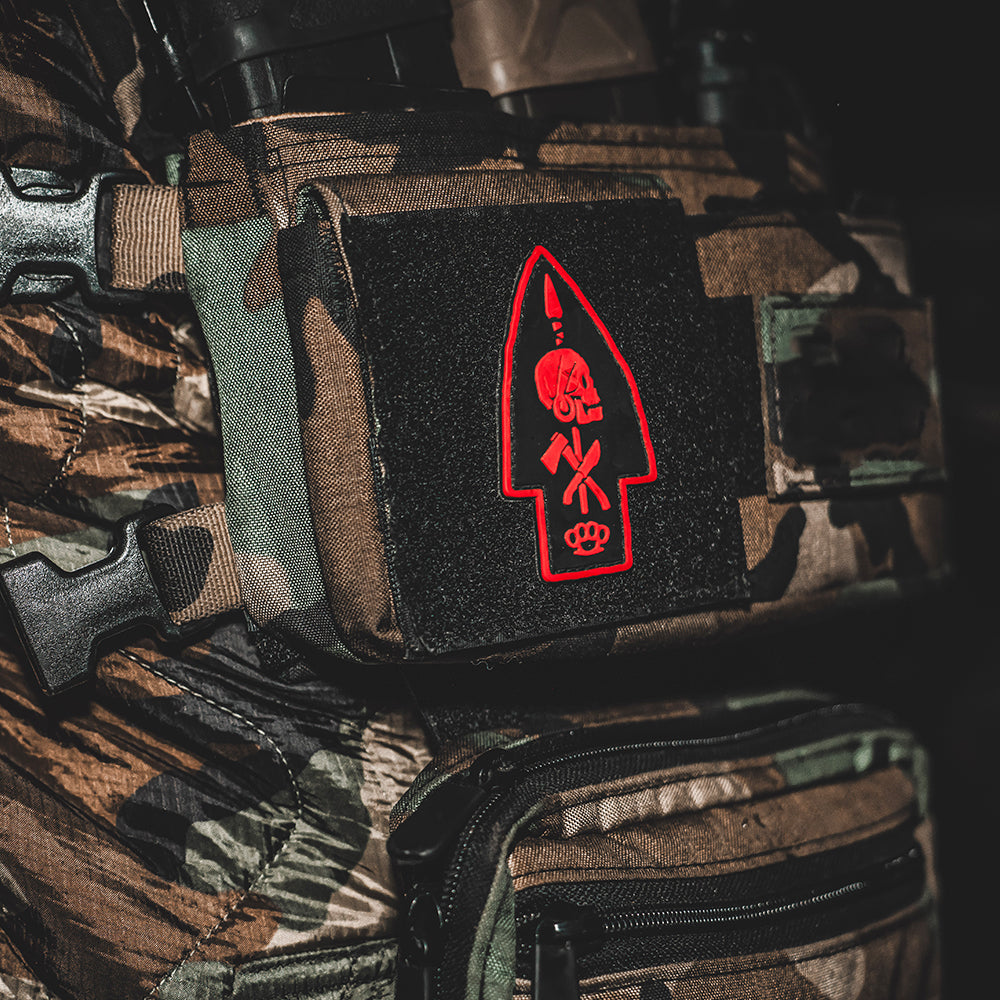Article: Fifth Generation Warfare

Fifth Generation Warfare
By: E.C. Browne
In the oddly difficult-to-acquire book "The Foundations of Geopolitics: The Geopolitical Future of Russia,” its author Aleksandr Dugin outlines Russia’s plan to become more influential by playing with political boundaries and using ideas to manipulate people's minds. Globally, the book is considered controversial because it endorses employment of devious tactics to influence societal self-destruction in the west; and it’s clearly working.
These ideas fall under the canopy of something called fifth-generation warfare, or 5GW. Unlike old-school wars with soldiers and tanks, 5GW is more about controlling information and perceptions - think of it as a game of world chess, but the pieces are news stories, social media posts, and economics instead of pawns, knights, bishops, and rooks.
Dugin, often referred to as Putin’s Rasputin, may seem a bit out there considering his beliefs and theories. Regardless of this, he’s been influencing Russia’s geopolitical moves for decades and his book has served as a sneak peek into this world of 5GW since the 90s. As we push further into the 21st century, knowing how to recognize and understand these new forms of conflict will be crucial for the free world.
We're all participants in warfare now, not just soldiers, spies, and politicians. Every single person who uses information, forms opinions, or influences others is part of this battlespace, shaping the course of the world’s geopolitical future.
Breaking Down 5GW
5GW merges kinetic and non-kinetic warfare together then adds a modern mix of today's information age and global networks. Think of 5GW like a multi-level game. It's not just about countries facing off, but involves different players: from hackers and giant companies to regular folks who unknowingly play a role thanks to the modern convergence of business security and national security. Tactics in 5GW aren't just about deploying better tech in gunfights or dropping bombs, but about things happening in the digital world and most importantly, in our minds. Cyber-attacks, propagation of fake news, manipulating economies, and psychological operations are the weapons employed to confuse, frighten and mentally fatigue opponents.
The world of 5GW camouflages the line where peace stops and war starts. The goal isn't always to defeat an enemy in a conventional sense, but rather to keep them disoriented in a constant state of worry and uncertainty. This form of warfare is duplicitous and attacks focus on the vulnerable areas in a society's social, economic and political structures.
The battlefield could be anywhere and involve anyone. It happens primarily behind the curtain, in the digital world of coding and data, where it plays with our perceptions and beliefs. It uses media and social media platforms exploiting how connected our world is, turning our communication methods into potential opportunities for conflict. Understanding 5GW is a necessity to mitigate and combat its effectiveness. As we explore its intricacies, keep in mind that 5GW marks a big change in how we comprehend and deal with conflict in our current world.
5GW brings a unique characteristic to the table that significantly blurs the boundaries between times of war and peace. This fuzziness isn't an accidental byproduct; it's a deliberate tactic. The goal is to keep adversaries in a state of continual uncertainty, making it challenging for them to recognize when a 5GW campaign has been launched or even to realize they are under attack. This constant ambiguity cultivates an atmosphere of perpetual discomfort and anxiety. A condition, that if sustained over time, has profound impacts on societies, ultimately leading to their fragmentation advancing cultural and political instability. This tactic is less about physical confrontations and more about disrupting the equilibrium of societies and their ability to collaborate and govern effectively.
Attacks on Culture and Society
The Prime targets of 5GW aren’t traditional military targets or physical structures. Instead, the targets are the opponent’s culture, society, and mental health. The tactics employed in 5GW are as unique as the targets. They can include spreading false information to fuel societal discord, using cyber warfare to disrupt crucial infrastructure, or taking advantage of pre-existing societal divides to sow further chaos. The principal objective of these tactics is to demoralize an enemy’s population and weaken confidence in their governing institutions. Consequently, the erosion of trust makes it increasingly difficult for the targeted group to establish reliable countermeasures and mount effective responses. This shift from conventional battlegrounds to the show grounds of information and societal cohesion forms the root of this new warfare paradigm, making the battle less about the physical world and more about the hearts and minds of the populace.
Use of Proxies
5GW often shies away from face-to-face confrontations. Instead, it prefers using proxies, which are third parties acting on behalf of the primary instigator. This can vary from supporting insurgent groups within enemy borders, to orchestrating cyber-attacks through groups of “hacktivists” that may present as independent to the public. Using proxies offers effective concealment, making it extremely difficult to trace actions back to the original attacker. This level of deniability is a key aspect of 5GW, allowing complex maneuvers and attacks to take place while maintaining a veneer of innocence or non-involvement on the part of the primary instigator. This tactic significantly complicates the task of responding effectively to such threats and contributes to the insidious nature of this new generation of warfare.
Tech Annexation
The widespread use of technology, particularly information and communication tech, is a key part of 5GW. Cyber warfare tactics like buying and selling 0-day exploits, data breaches, watering hole attacks, and distributed denial-of-service (DDoS) attacks amongst other hacking techniques disrupt an enemy's operations and logistical capabilities. Each of these elements drastically changes the nature of conflict.
Election Interference
The alleged Russian interference in the 2016 U.S. presidential election is often held up as a prime example of 5GW. This operation involved a complex web of state-backed hackers, social media manipulation, and false information campaigns aimed at steering public sentiment and causing social upheaval in the U.S. The goal wasn't a traditional military engagement but a concerted effort to shake up a political election and create societal divisions—a classic 5GW maneuver.
The Emergence of ISIS
The rise and spread of the Islamic State illustrates another aspect of 5GW, this time from the angle of a non-state player. ISIS used social media for recruitment, spreading propaganda, and psychological warfare. Their ability to spark fear and division worldwide, while holding physical control in Iraq and Syria, embodies the fluid, multi-dimensional warfare that defines 5GW.
Brexit and Information Warfare
While not typically seen as an instance of warfare, the Brexit campaign leading up to the 2016 referendum in the United Kingdom did display several key features of 5th Generation Warfare, especially in terms of information warfare and the manipulation of public sentiment.
The UK's decision to leave the European Union was influenced by many factors, but a crucial part of the campaign was the successful manipulation of narratives, beliefs, and public perceptions. The extent of this manipulation only became clear after the referendum, as later investigations uncovered a web of false information, strategic messaging, and the exploitation of existing social and political divisions.
In this context, the Leave campaign's strategic use of slogans like "Take back control" effectively tapped into a sense of national identity and sovereignty, while their messaging around immigration stirred up fears and exploited societal rifts. Moreover, reports of targeted social media ads, misuse of data, and the spread of misleading information highlight the role of information warfare and technology in shaping public sentiment and political outcomes.
Importantly, there was also some ambiguity about the sources of some campaign funding, leading to speculation about third-party involvement and possible foreign influence - a trait often associated with 5GW.
Brexit illustrates how the tactics and strategies typical of 5GW - like false information, manipulation of narratives, exploitation of societal divisions, and use of technology - can significantly sway political outcomes, even in situations not usually seen as 'warfare'.
This case study offers a nuanced view of how 5th Generation Warfare tactics can seep into political processes, raising questions about the vulnerability of democracies to such tactics and the need for greater transparency, truthfulness in information, and media literacy in our societies.
The Hybrid War in Ukraine
While the physical dimensions of this war, like troop movements and territorial acquisitions, are evident, the more covert aspects tied to 5GW are deeply woven into the fabric of this conflict.
IO (Information Operations): Russia has engaged in highly sophisticated disinformation campaigns with the goal of shaping international and domestic narratives. For instance, there have been instances of manipulated or selectively presented information to portray opposing forces in negative lights, sway public opinion, or justify military actions e.g. Ukrainian Nazis, Soros Funded Bio labs, mass corruption etc.
Cyberattacks: Throughout the conflict, cyberattacks on critical infrastructures, such as power grids and governmental websites, have been reported. These attacks serve not just to disrupt, but also to instill fear and uncertainty in the enemy, affecting their ability to operate effectively.
Social Media Manipulation: Using platforms like Twitter and Facebook, various entities have sought to influence the perceptions of international audiences. Bots, trolls, and fake accounts disseminate propaganda, false information, or overly biased viewpoints to stoke emotions and influence perceptions.
Economic Leverage: Russia's dominance in the energy sector, especially natural gas, has been used as a tool for political and economic pressure, highlighting the blurred lines between economic strategies and warfare in a 5GW context.
In essence, the Russia-Ukraine conflict isn't just a clash of troops and territories; it's a sophisticated battle of narratives, perceptions, and influences, where every tweet, news article, and cyberattack becomes a weapon in the broader landscape of 5GW. The challenge for global observers and participants lies in sifting through the layers of information, misinformation, and hidden agendas to discern the realities of this modern-day warfare.
The Broader Implications
Global Security Landscape
The emergence of 5GW marks a significant change in the global security landscape. The reality that no country is immune to such tactics—irrespective of their geographical location or military strength—calls for a reassessment of national security strategies. It necessitates a more comprehensive approach to security, incorporating elements such as cybersecurity, information integrity, and societal resilience.
State Sovereignty
5GW often takes advantage of the open nature of democratic societies, exploiting their free flow of information and societal liberties. This could potentially result in a weakening of state sovereignty, as external entities manipulate internal social, political, and economic dynamics. It poses critical questions about how states can safeguard their sovereignty while maintaining their democratic nature.
International Relations and Diplomacy
The blurred boundaries and ambiguity inherent in 5GW can place strain on international relations. The use of proxies and information warfare can make it challenging to assign responsibility for hostile actions. This vagueness can lead to rising tensions, sparking diplomatic crises and complicating efforts to resolve conflicts.
Legal and Ethical Issues
5GW raises several legal and ethical issues. Since it often operates in the gray areas of international law, there's an urgent need to establish clear norms and legal frameworks to address this form of warfare. Similarly, the use of tactics such as disinformation and societal manipulation bring up significant ethical concerns.
Technology and Security
The dependence of 5GW on technology, particularly information and communication technologies, underscores the increasing link between technology and security. It highlights the need for robust cybersecurity measures and points to potential security risks associated with emerging technologies like artificial intelligence and quantum computing.
Economic Stability
The use of economic warfare tactics in 5GW highlights the interaction between economics and security. It illustrates how economic tools can be weaponized, underlining the necessity for economic resilience alongside traditional defense capabilities.
Given these extensive implications, it becomes clear that 5GW is not merely a new type of warfare but a paradigm shift in how we comprehend conflict, security, and international relations.
Adapting Strategies and Formulating Policy Responses
As we delve deeper into the realm of 5th Generation Warfare, it becomes imperative to chart out effective countermeasures that can respond to this shifting paradigm of conflict. This necessitates a thorough re-evaluation of time-honored defense strategies and the generation of innovative, dynamic approaches that can grapple with the entire array of 5GW tactics.
Integrating Policies
Given the manifold nature of 5GW, it's impractical and ineffectual to depend on a singular policy or strategy as a comprehensive solution. Instead, what's needed is an amalgamation of different policy approaches, blending diplomacy, defense, development, and information into a unified strategy. It's critical to dissolve the compartmentalization between these policy spheres to orchestrate a holistic, well-coordinated response capable of addressing the complexity of 5GW.
Reinforcing Cyber Defenses
Cyber warfare forms a key element of 5GW, necessitating robust cyber defenses to be an integral part of any strategic response. This requires substantial investments in cybersecurity infrastructure to ensure protection against potential attacks. Additionally, it is essential to enhance workforce training to boost cyber readiness and to foster international collaborations that can serve to deter potential cyber threats and penalize cyber aggressors effectively.
Upholding Information Integrity
The struggle to control narratives is a distinct characteristic of 5GW. Hence, ensuring the veracity of information is a mission-critical component. This could involve steps like promoting media literacy among the population, investing in mechanisms for fact-checking and information verification, and combating disinformation through the timely dissemination of accurate information.
Fostering Resilient Societies
5GW strategies often exploit societal fault lines and breed instability. Consequently, forging resilient societies, which can resist these tactics, should be a key aspect of any 5GW response strategy. This can include the formulation and implementation of policies aimed at addressing social inequalities, promoting social cohesion, and strengthening public trust in governmental and non-governmental institutions.
Promoting Global Cooperation
5GW is not a local or regional challenge but a global menace that necessitates a global response. To counter the threats posed by 5GW effectively, there's a pressing need to bolster international cooperation in areas like intelligence sharing, coordinating strategic responses, and in formulating norms and regulations governing cyber warfare and information operations.
Utilizing Technology
Given that 5GW effectively utilizes technology to further its objectives, our responses must also harness the potential of technology. This can involve the use of artificial intelligence to enhance cybersecurity, deploying advanced analytics to understand and counter disinformation campaigns, and using other emerging technologies to counteract the myriad threats posed by 5GW.
The strategic adaptations and policy recommendations outlined above represent the initial stages of confronting the challenges posed by 5th Generation Warfare. As the nature of this warfare continues to morph and evolve, our strategies and tactics must also evolve in tandem. The nature of 5GW demands adaptability, innovation, and preparedness for the unexpected. The stakes are undoubtedly high, but by addressing and understanding 5GW head-on, we can hope to steer through the intricacies of this new warfare landscape and work towards the preservation of global peace and security.
Saved Rounds
The advent of 5th Generation Warfare ushers in a new set of challenges for nations and international institutions. As the demarcation between war and peace becomes increasingly blurred, and as conflict insidiously permeates the digital and psychological spheres of society, the need for adaptive, flexible responses becomes paramount. The future of global security hinges not only on our ability to comprehend and predict these evolving threats but also on our aptitude to encourage cooperation and foster resilience in confronting them.







